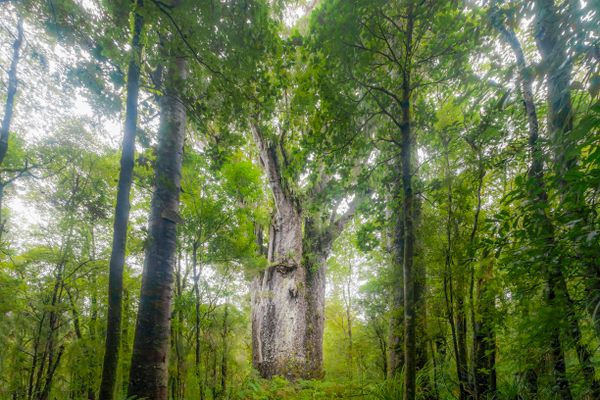What Poop Can Teach Us About an Ancient City’s Downfall
Cahokia’s decline is at least partially a story of climate change.

Never underestimate the power of poop. After more than 1,000 years, it can still have a lot to offer.
Just ask the authors of a new study, out today in the Proceedings of the National Academy of Sciences, which discusses how fecal remains can teach us about the rise and fall of Cahokia, an ancient city less than 10 miles outside of present-day St. Louis, Missouri. According to UNESCO, Cahokia was “the largest pre-Columbian settlement north of Mexico.”
Previous excavations of houses in the area, said co-author Sissel Schroeder in a press release, had found that the city’s population began to grow around the year 600, peaking by 1100 with tens of thousands of residents. Things began to change around 1200, with the city emptying out by 1400. AJ White, lead author of the new study and a Ph.D. candidate in archaeology at the University of California, Berkeley, set out with his colleagues to fuse data from both the archaeological and environmental records, in hopes of clarifying what drove out Cahokia’s residents.

Naturally, the researchers turned to poop. More of it was deposited, of course, when more people were living in the area—so, they wondered, would poop dating from the time of the downturn contain any clues as to what was going on then? To investigate, White and his colleagues examined two sediment cores taken from Cahokia’s Horseshoe Lake. (One was newly cored by White, the other by the environmental scientist Samuel Munoz in 2015.) These cores contain “fecal stanols,” traces of the human poop that drifted off from the land and into the lake. Researchers are able to date the cores because as they get newer, they appear higher up within the lake.
The team compared the levels of fecal stanols to those of other stanols that come from bacteria in the soil. They found that, the younger the sediments got, the heavier their oxygen concentrations—meaning that water was evaporating along with lighter forms of oxygen. In other words, there was probably less precipitation during Cahokia’s later years—when we know from excavations that fewer people were living there—thus impeding local agriculture and causing the population to thin out. The fall of Cahokia, it seems, is at least partially a story of climate change. It’s a tale that’s been told by other poops as well, such as those of Incan llamas in the Andes.























Follow us on Twitter to get the latest on the world's hidden wonders.
Like us on Facebook to get the latest on the world's hidden wonders.
Follow us on Twitter Like us on Facebook